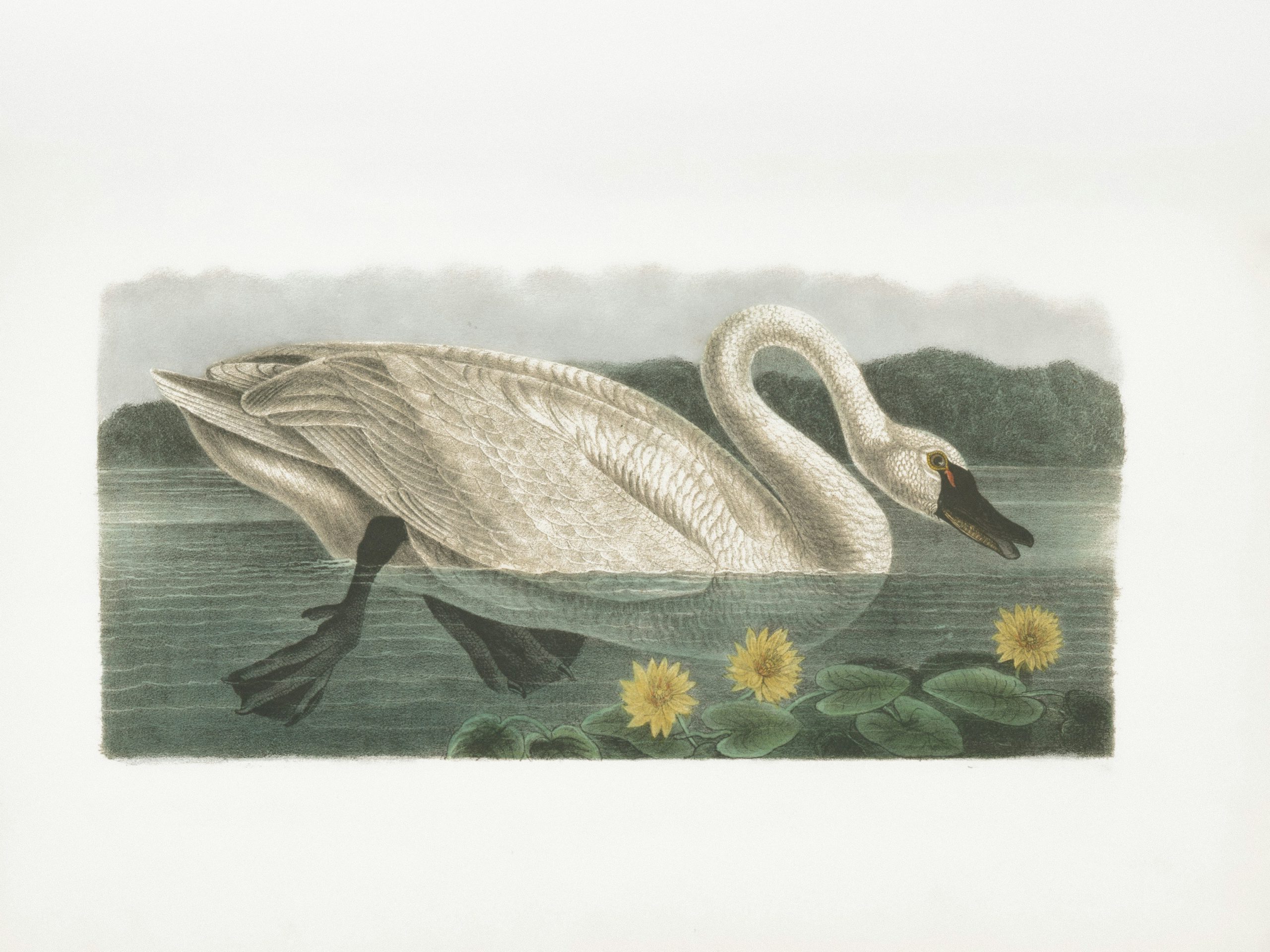Few creatures have so persistently captured the human imagination as the swan. At once ethereal and commanding, the bird’s long neck, white plumage, and tranquil glide across water have given rise to centuries of symbolism: purity, fidelity, love, and metamorphosis, to name a few. From myth to poem, painting to textiles, pottery to jewellery, the swan’s image has continually surfaced in waves of design and art history, each time reframed but never diminished.
To understand such history, one must begin with a brief “Swan-ography,” the earliest chapter of which belongs to mythology. In Ancient Greece, the swan was associated with Apollo, Aphrodite, and the arts. Aristotle even noted that swans “are musical and sing chiefly at the approach of death.” Most famously, Zeus transformed into a swan to seduce, or ravish, Leda, a tale retold across countless canvases, parchments, and sculptures. In Celtic and Norse traditions, swans were linked to transformation, otherworldly journeys, and the soul. From the outset, then, the bird bore a paradoxical iconography: chastity and seduction, peace and
power.
Much later, in the nineteenth century, amid a flourishing interest in natural symbolism, swans swam into the visual lexicon of jewellery, silverware, and the decorative arts. They now embodied fidelity, often appearing in pairs, as well as the melancholic weight of Romanticism. Their presence in Victorian mourning jewellery was subtle yet poignant, a reminder of constancy in loss. Pre-Raphaelite painters also seized on the swan’s dreamy associations, imbuing canvases with an atmosphere of languid beauty and adorning their female figures with long, swan-like necks.
If the Victorians saw the swan as sentiment and the Pre-Raphaelites as dreamlike, the Art Nouveau designers seized it as form. With its long, curving lines and organic elegance, the bird was perfectly suited to the whiplash curves of late nineteenth-century glass and
metalwork. Lalique’s jewellery and Tiffany’s glass are filled with creatures of pond and air, yet none lent itself so readily to stylisation as the swan. Later, in the geometric glamour of Art Deco, swans reappeared in streamlined ceramics and furnishings, distilled into motifs that suggested both sophistication and serenity.
The twenty-first century has seen an unexpected revival of swan imagery. Lovingly included in whimsical online zines, Instagram interiors, and fashion, swans have re-emerged as objects of play and nostalgia: perched on mantelpieces, drawn in scrapbooks, or repurposed as planters. Jewellery designers, too, are rediscovering their delicate forms, sometimes tapping into a sense of girlhood purity, sometimes offering a more ironic nod to retro kitsch. Where once the swan embodied marital fidelity, even death, today it can also speak to a yearning for life beyond the city, a retreat into tranquillity, or a memento of childhood, for a time one can
only return to through memory.
Why does the swan endure when so many motifs have slipped into obscurity? Perhaps because the bird itself embodies contradiction: wild yet graceful, delicate yet formidable, reminiscent yet hopeful. Its visual form is strikingly adaptable, whether rendered in fine silver, glistening porcelain, or stylised glass. For collectors, swans offer a connection to centuries of design history and an enduring symbol that feels both timeless and timely.
At auction, their appeal is equally broad. From Victorian jewellery and Art Deco ceramics to contemporary statement interior pieces, swans continue to glide across the saleroom, carrying with them layers of meaning. For some bidders, it may be nostalgia, for others, pure aesthetics. For all, the swan represents a story that has never quite lost its power.

